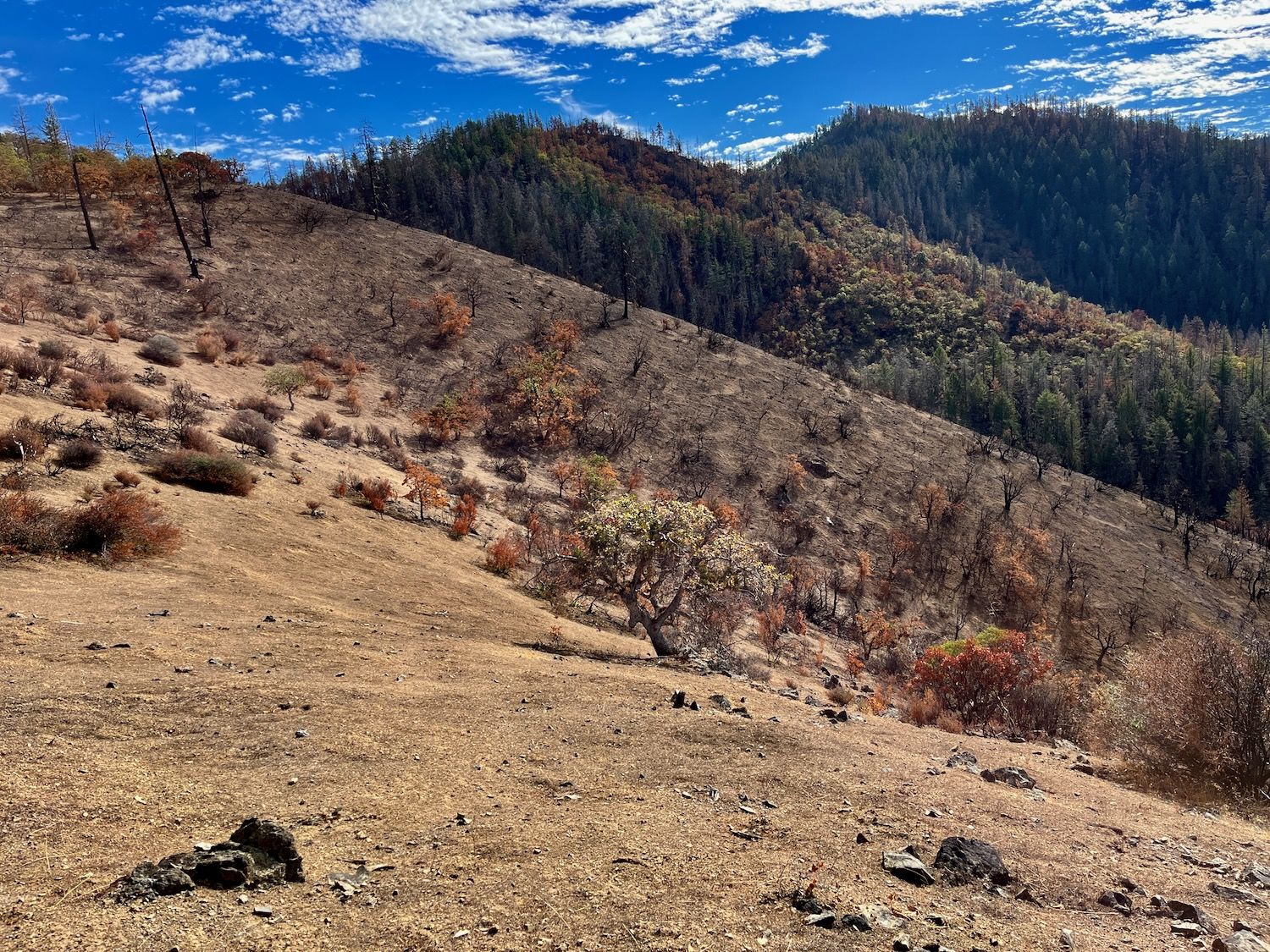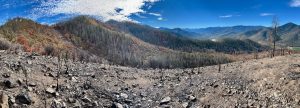
2024 Upper Applegate Fire Report
At 1,396 acres the Upper Applegate Fire was not a large wildland fire, yet it offered important insights into wildfire behavior, the rising cost of fire suppression, and the response of low elevation habitats in Southwestern Oregon to wildland fire.
Started as a human ignition on June 20, 2024, the Upper Applegate Fire escaped initial attack containment on the valley floor and raced uphill under afternoon heat and high winds towards Cinnabar Ridge. This initial weather, terrain and wind driven run burned through extensive slopes of chaparral that last burned in the 1972 Little Applegate Fire. It also burned through oak woodland, mixed hardwood habitats, mixed conifer forests, and patches of Douglas fir mortality created by relatively recent flatheaded fir borer outbreaks.

Although initially a public safety emergency and threat to surrounding communities after the first wind-drive run, the Upper Applegate Fire moved into a backing alignment, working its way slowly off Cinnabar Ridge and into the Little Applegate Valley near the ghost town of Buncom. The fire burned in a complex mosaic, predicated largely on weather conditions and terrain. When the smoke had cleared 53% of the fire area had burned at low severity, while 46% burned at moderate severity and only 1% burned at high severity.
Most of the high and moderate severity fire occurred in chaparral habitats where stand replacing fire is characteristic, normal and regenerative. At the same time, oak woodlands, madrone and live oak groves, mixed conifer forests, and beetle mortality patches burned predominantly at low severity with understory fire effects. Contrary to BLM rhetoric, neither the stands effected by recent beetle mortality or the closed canopy conifer stands so routinely identified as “overly dense,” or a “fire risk” burned with much intensity. In fact, these stands almost uniformly burned at low severity, with low rates of spread, low flame lengths, and minimal fire intensity.
Rather than catastrophic, the Upper Applegate Fire was highly regenerative, characteristic, and beneficial. Our newest fire report on the 2024 Upper Applegate Fire explores the influences that affected fire behavior, the impacts of fire suppression, the cost of Oregon Department of Forestry suppression to tax payers, and the long term biological benefits of the Upper Applegate Fire.
To read the full report click here: 2024 Upper Applegate Fire Report
